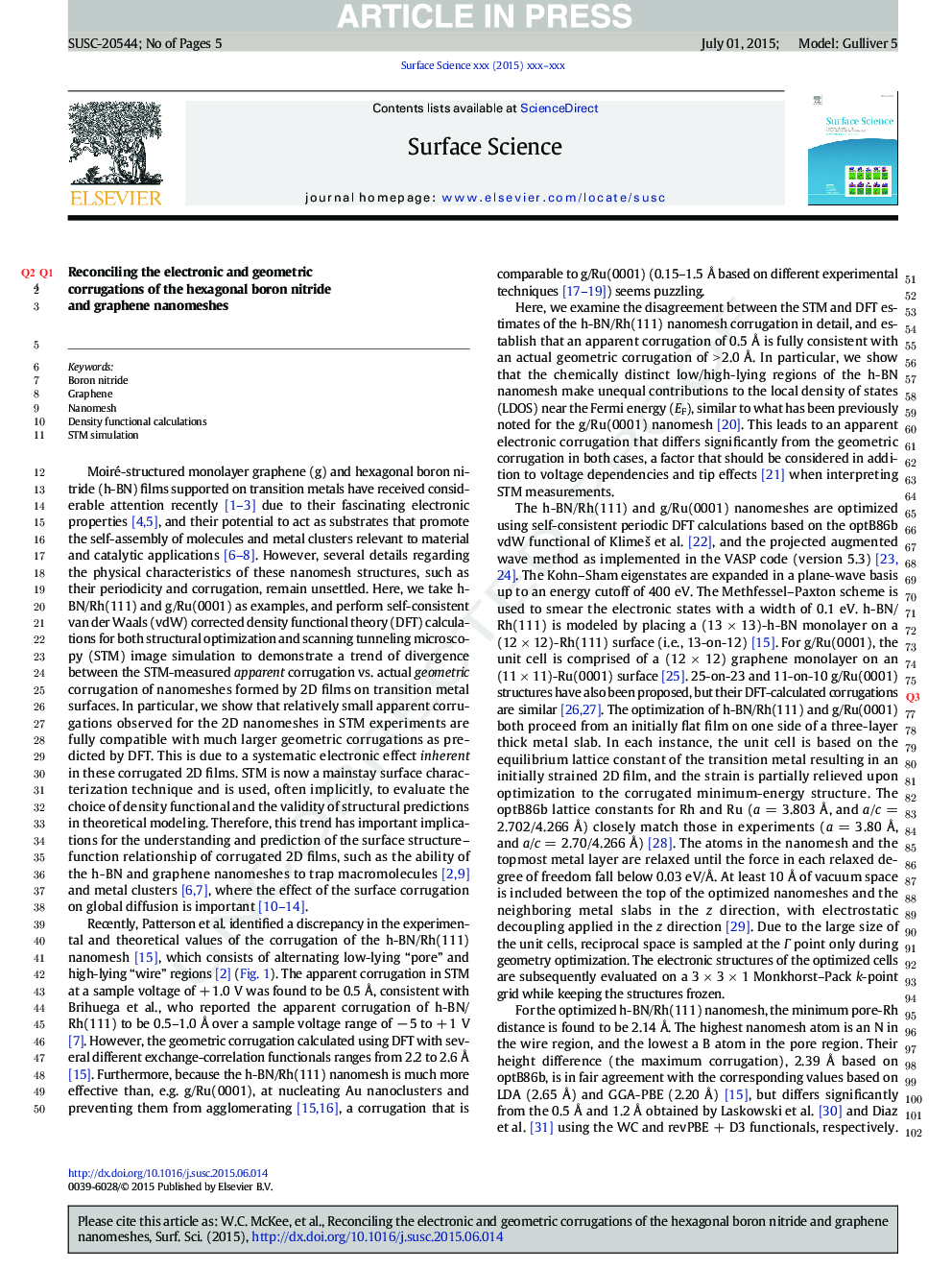| Article ID | Journal | Published Year | Pages | File Type |
|---|---|---|---|---|
| 5421606 | Surface Science | 2015 | 5 Pages |
Abstract
Monolayer hexagonal boron nitride on Rh(111) and graphene on Ru(0001) illustrate a trend of divergence between the density functional theory (DFT) calculated geometric corrugation, and scanning tunneling microscope (STM) measured apparent corrugation, of metal-supported 2D films that feature chemically distinct regions. Notably, the geometric and apparent corrugations differ by up to 2Â Ã
for boron nitride/Rh(111), whereas both the DFT-simulated and the experimentally observed STM images agree in the apparent corrugation over a wide range of bias voltages. The disparity is due to unequal contributions of the low/high-lying atoms to the local density of states in the vicinity of the Fermi level. This phenomenon has important implications for the structural characterization of certain supported 2D films, which are being explored for novel electronic and material applications.
Related Topics
Physical Sciences and Engineering
Chemistry
Physical and Theoretical Chemistry
Authors
William C. McKee, Vincent Meunier, Ye Xu,
